Monet in Madrid
An extraordinary Monet exhibition brings together 50 masterpieces from the Musée Marmottan in Paris, now at CentroCentro in Madrid. The largest exhibition ever seen in Spain, of the brilliant impressionist.
“Colour is my daily obsession, my joy and my torment.”
Claude Monet was born in 1840 in Paris, from an unconventional marriage for the time: Claude and Louise, a businessman and a singer.
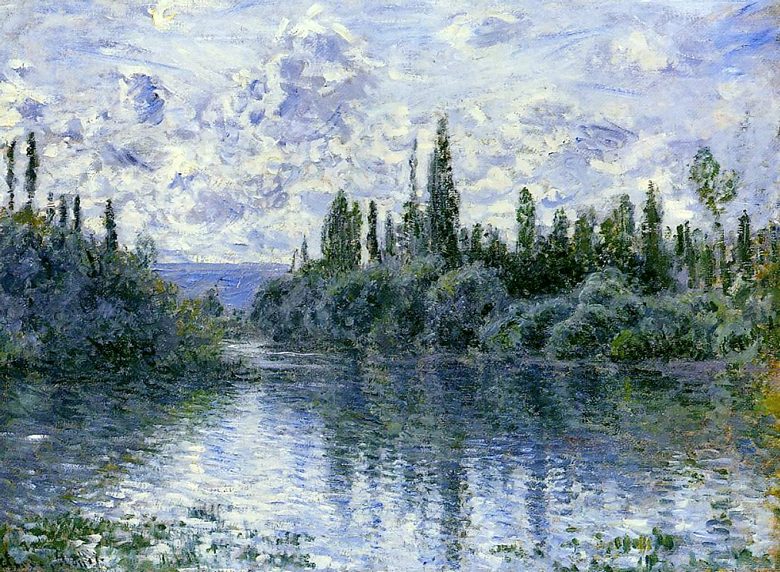
In 1845, his family moved to Le Havre (Normandy), where he studied drawing and painted seascapes with Eugène Louis Boudin. At fifteen, he already enjoyed a reputation as a cartoonist, earning his first money. As a teenager, he saw his mother die. At 19 he participated in the Exposition Municipale du Havre, with his painting Vue de Rouelles (1858).
A year later, he traveled to Paris to study art, supported by his father and his aunt Jeanne-Marie, who recommended the painter Armand Gautier. He attended the Académie Suisse, where he was provided with models to draw human anatomy.
His apprenticeship was interrupted by military service that forced him to enlist in the Algerian War. Within a year, he fell ill and was repatriated to France for a six-month convalescence. His aunt paid to avoid five more years of military service.
He entered the studio of the Swiss artist Charles Gleyre. There he joined other young painters such as Auguste Renoir, Alfred Sisley and Frédéric Bazille.
In 1867, with his girlfriend Camille he had his first child, Jean, for which they were disowned. They moved to live in Fécamp. His family situation was extremely difficult due to lack of means. After a failed suicide attempt, Monet received financial help from his aunt.
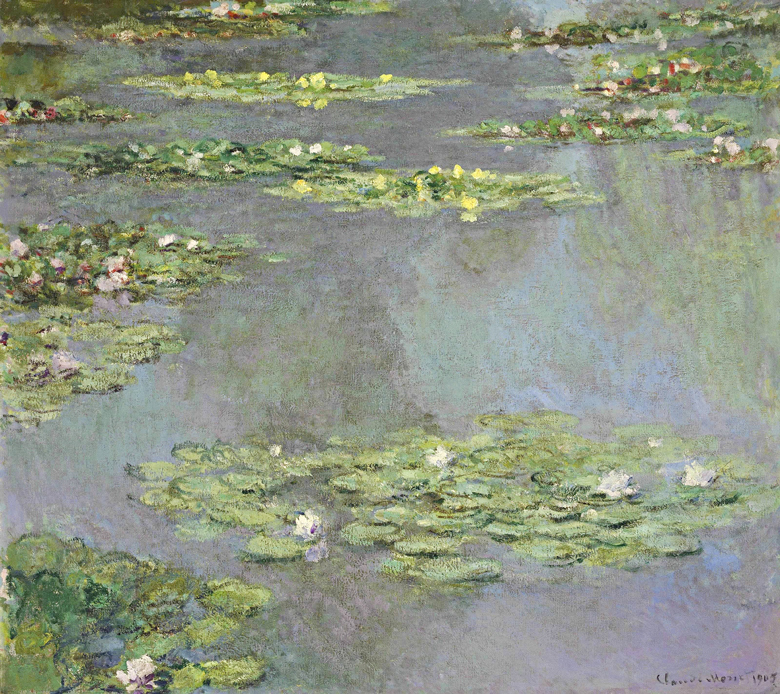
Finally, Monet married Camille in 1870 and they moved to Trouville (Normandy), where they were surprised by the Franco-Prussian War. Of republican ideas, Monet did not want to fight for his homeland and fled to London. There he learned of the death of his patron’s aunt.
He became friends with Camille Pissarro, Sisley and Daubigny. Thanks to them, Monet met the art dealer Durand-Ruel, a meeting that would change his destiny. The prestigious gallery owner launched him to fame in Paris and London. He was awarded the silver medal of the Exposition Maritime Internationale du Havre.
After the death of his father, Monet changed London for Holland. Fascinated by its landscapes, he settled in Zaandam, near Amsterdam, until the end of the war.
He returned to Paris where he painted outdoor landscapes and society scenes, with some success. As his style evolved, he transgressed conventions in favor of a more personal artistic expression.
After being rejected at the Paris Salon, Monet and his friends organised their own exhibitions titled Les Independentes. An art critic, he mockingly wrote another label, “impressionists,” because of the unfinished appearance of his works and because of the title “Impression: Rising Sun,” 1872.
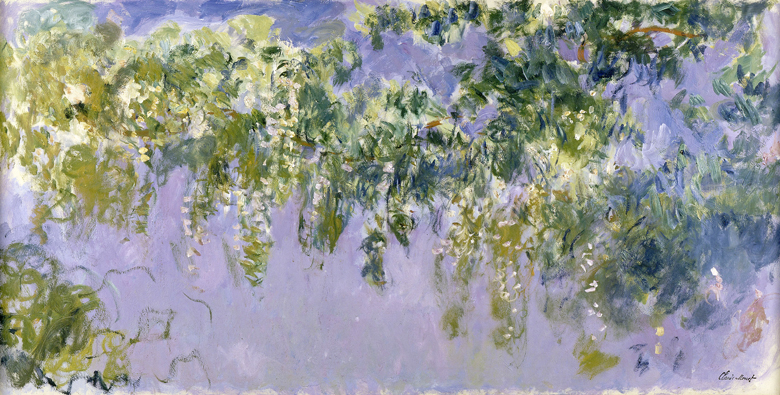
Monte wanted to capture color variations with his series on the same theme, at different times of the day or in different seasons. He gradually accentuated the lighting effects until he blurred the shapes and even melted them.
In Paris, his second child, Michel, was born, which definitively broke the fragile health of his wife. Camille’s death in 1879 left him desperate, not knowing how to organise his life.
He had been secretly in love with Alice for some time, married to the art dealer and collector Ernest Hoschedé. They had 6 children and it is suspected that the last one was Monet‘s son.
They had met when Ernest commissioned some paintings for his castle Château de Rottembourg. A year later, Ernest became bankrupt and went to live with his family in Monet‘s house. They had a close and complicated relationship.
Alice oversaw the education of her six children and Monet‘s two. When Ernest died, Monet married his widow. A son of the painter, Jean Monet, would marry Blanche Oschedé, Alice’s daughter with her first husband.
Some of his masterpieces have become icons of art history: Sunset Print, Regattas in Argentuil, Poppies, Parasol Walk, Saint Lazarus Station, Rouen Cathedral…
In 1890 he acquired a property at Giverny, near Paris, where he spent the happiest years of his life. The artist was a lover of plants and enjoyed gardening.
Monet created a beautiful pond where he planted water lilies, crossed by a Japanese suspension bridge and surrounded by weeping willows and bamboo clumps. He designed and built the garden of his dreams, today open to the public with a museum in his honour.
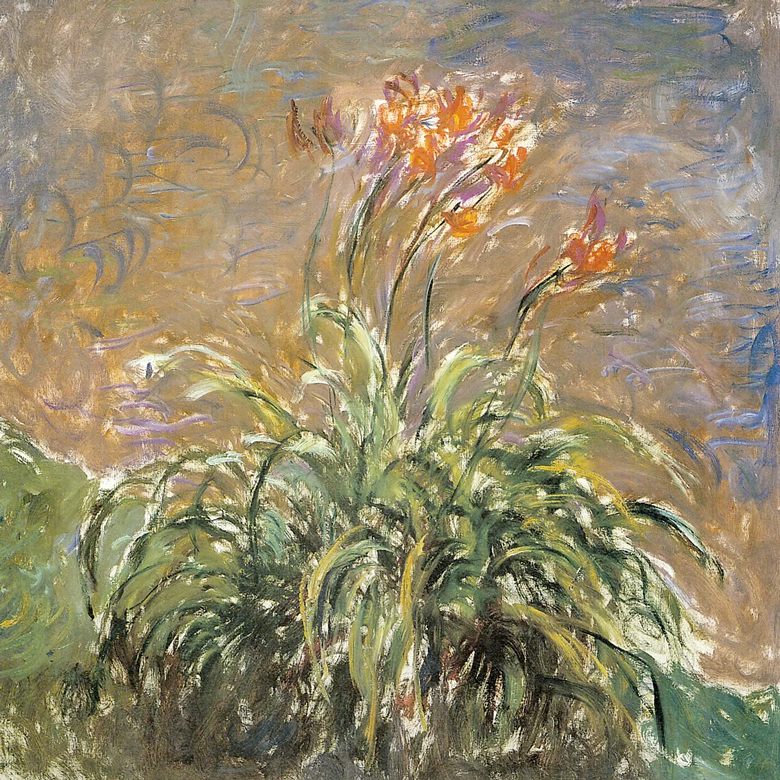
For 30 years (1890-1926) he painted the pond in his garden in more than 200 paintings. He was a master of meticulous observation and the play of light and shadow.
“A moment, an aspect of nature, contains everything.”
His Water Lilies or Nymphéas stand out for their meticulous attention to detail, bright lights and shadows. It was his way of capturing the delicate flowers at different times of the day. Water lilies became his most famous inspiration and possibly the reason for his enormous success.
The painter, who lived very long, achieved great recognition from critics and an excellent economic position.
From the age of 72, he suffered from cataracts and gradually lost his sight. With unsurpassed willpower, he continued painting until contracting lung cancer. He died at the age of 86, in Giverny (1926).
Tragic ironies of life: Beethoven became deaf at the age of 30 and continued composing. Monet, now half blind, also continued painting until his last breath.
His Impressionism became almost Expressionism. No one then understood his value… perhaps not even that of his own creator. Monet himself destroyed his paintings by trampling on them or burning them at the stake. Others were damaged in the MOMA fire in 1958 (Museum of Modern Art, New York).
“Everyone discusses my art and pretends to understand, as if it were necessary to understand, when it is simply necessary to love.”
His greatest concern was to capture the chromatic and light vibration on his canvases. For Monet, light generates colour and form. His favourite themes were landscapes and especially seascapes, scenes of rivers and ponds. What fascinated him most were the reflections in the water.
His pictorial studies of aquatic plants are the apotheosis of his career. He dispensed with any perspective, eliminating the horizon to leave the viewer immersed in the mirror of the water.
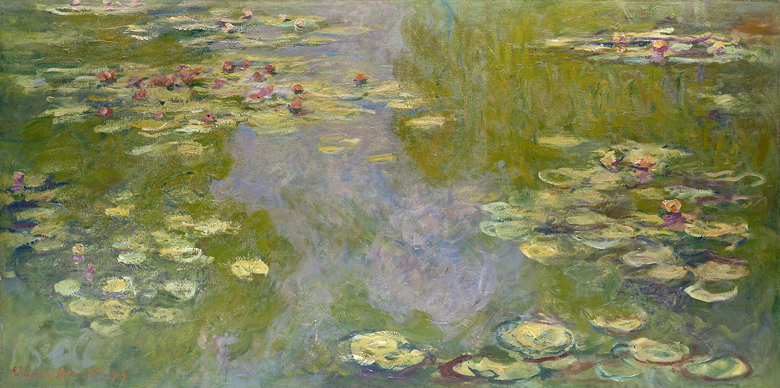
His latest works are the most valued for his innovation in the field of art. In 2014, one was auctioned for 40 million euros. Some of his Water Lilies are on display at the Musée Orangerie, Paris, the Art Institute of Chicago and MOMA, Museum of Modern Art, New York.
Monet is considered one of the pillars of Impressionism. He never drifted towards other artistic currents and remained faithful to this pictorial style throughout his life. The name of the group even derives from the title of his painting: Impression, Rising Sun.
The development of Impressionism in art was soon followed in other media. This is how Impressionist Music and Literature were born.
He dispensed with line and volume to focus on the appearance of things, their colour and light. With his sensitive, imprecise and luminous painting, Monet is, without a doubt, the soul of Impressionism.
The artist’s last exhibition in Madrid was Monet and Abstraction at Museo Thyssen (2010). The current one is organised in collaboration between the Madrid City Council, Arthemisia and Musée Marmottan in Paris.
Monet, CentroCentro, Madrid (Sep. 2023-Feb. 2024)

